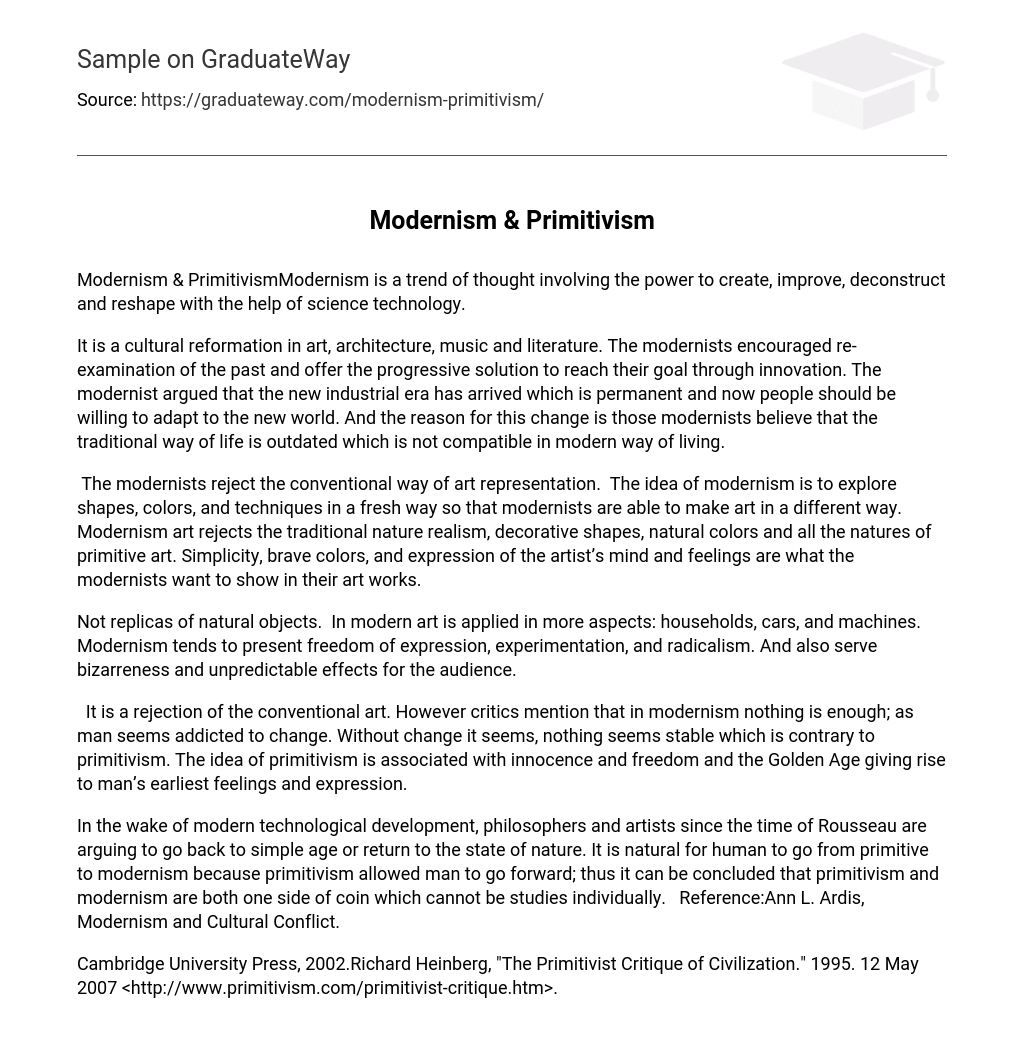Modernism is a trend of thought involving the power to create, improve, deconstruct and reshape with the help of science technology. It is a cultural reformation in art, architecture, music and literature. The modernists encouraged re-examination of the past and offer the progressive solution to reach their goal through innovation. The modernist argued that the new industrial era has arrived which is permanent and now people should be willing to adapt to the new world. And the reason for this change is those modernists believe that the traditional way of life is outdated which is not compatible in modern way of living.
The modernists reject the conventional way of art representation. The idea of modernism is to explore shapes, colors, and techniques in a fresh way so that modernists are able to make art in a different way. Modernism art rejects the traditional nature realism, decorative shapes, natural colors and all the natures of primitive art. Simplicity, brave colors, and expression of the artist’s mind and feelings are what the modernists want to show in their art works. Not replicas of natural objects. In modern art is applied in more aspects: households, cars, and machines. Modernism tends to present freedom of expression, experimentation, and radicalism. And also serve bizarreness and unpredictable effects for the audience.
It is a rejection of the conventional art. However critics mention that in modernism nothing is enough; as man seems addicted to change. Without change it seems, nothing seems stable which is contrary to primitivism. The idea of primitivism is associated with innocence and freedom and the Golden Age giving rise to man’s earliest feelings and expression. In the wake of modern technological development, philosophers and artists since the time of Rousseau are arguing to go back to simple age or return to the state of nature. It is natural for human to go from primitive to modernism because primitivism allowed man to go forward; thus it can be concluded that primitivism and modernism are both one side of coin which cannot be studies individually.
Reference
- Ann L. Ardis, Modernism and Cultural Conflict. Cambridge University Press, 2002.Richard Heinberg, “The Primitivist Critique of Civilization.” 1995. 12 May 2007 <http://www.primitivism.com/primitivist-critique.htm>.





